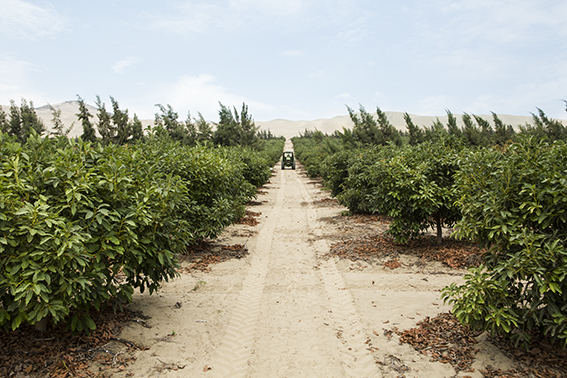For U.S. shoppers who read their sticker labels, they'll start to notice their hass avocados are more likely from Peru rather than Mexico now through September.
The South American country's fruit is heavily promoted in the U.S. from Memorial Day to Labor Day, said Xavier Equihua, president and CEO of the Peruvian Avocado Commission, based in Washington D.C.
Mexico's shipments dwindle in summer, providing an opportunity for Peru's crop.
“California and Mexico have a smaller crop this year, and there's more demand,” Equihua said. “Last year, avocado became a pandemic-proof product.”

U.S. demand for avocados has grown gradually in the last few years, and the commission's expectations are that these imports will outpace 2020's volume of 180 million pounds, Equihua said.
Peru will export close to a billion pounds worldwide, of which 200-235 million pounds will go to U.S. distributors, representing a double digit increase.
Peru is the second largest producer-exporter of avocados in the world after Mexico. What the U.S. market is for Mexico, the European market is for Peru, as Peru is the largest supplier of avocados in Europe.
The commission is celebrating these wins, along with its 10th anniversary. The commission was formed in 2010, soon after the U.S. Department of Agriculture approved avocado imports from Peru.
Peru's avocados have several points of distinction for U.S. markets.
“Peruvian fruit tends to be 10 ounces, because there are younger trees there, and those tend to produce bigger fruit,” said Bob Lucy, president of Del Rey Avocado, Fallbrook, Calif., and chairman of the commission's marketing committee.

Also, many Peruvian growers have made a strong commitment to sustainable farming methods, such as capturing and using water from the Andes Mountains annual snowpack.
“Peruvian growers believe that every drop of water counts and are adjusting their practices to honor their commitment to sustainable growing practices,” commission chairman Jose Antonio Castro of Agrokasa said in a news release.
Agrokasa grows in Barranca, Lima and Ica in Peru, and the weather there has been stable so far, so it looks like this will be a regular season, he said.
However, some production areas may be a little delayed in picking while waiting for the crop to acquire the minimum dry matter percentage that consumers want.
Dry matter is the solid content of the fruit minus the water, an indirect sign of maturity and ideal flavor.
Peru's growers expect to produce 30% more avocados compared to the 2020 season, Castro said. Other estimates hover at 10% higher.
Regardless of what the exact volume increase will be, “weather has been very favorable for avocado production this year. Sizing is more normal, and volumes are much higher as anticipated by the industry,” said Brock Becker, senior sales and sourcing export manager at Mission Produce, Oxnard, Calif.

The amount of Peruvian avocados that go to the U.S. depends on the demand from Europe, which has a strong avocado market, Lucy said.
“It's a fluid situation,” he said.
Peru has been shipping to the U.S. since mid-March, but promotable volumes will be from May through September.
“This season we have been shipping early compared to the 2020 season,” Castro said. “It looks like this year, the U.S. market will be more demanding of Peruvian avocados, and one of the main reasons could be that California will have an off season.”
Replace this sentence with: Costs with logistics, the pandemic, labor and Peruvian policy are all putting more pressure on growers and exporters to stay competitive.
More on avocados from Peru:
Avocados from Peru are coming in strong and sporty
Avocado all day and night

